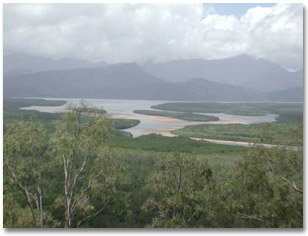Effects of Nutrient Availability on Ecological Processes in Mangrove Forests: a Caribbean-Queensland Comparison

Our main goal is to understand the differences and similarities in nutrient cycling and response to eutrophication among the high diversity Indo-west Pacific mangrove forests that occur in Queensland, Australia and the lower diversity neotropical mangroves, such as those in Florida, Belize and Panama.
Comparative work between these two biogeographic provinces will provide powerful tests of hypotheses about general ecological processes in mangrove ecosystems world-wide. The objectives of this study are to determine the patterns of nutrient limitation across mangrove forests in Queensland and the effects of nutrient availability on plant growth, within-plant nutrient conservation mechanisms, litter turnover rates, soil chemistry, and primary consumption.
We have three long-term experiments along a rainfall gradient, including sites near Townsville, Hinchinbrook Channel, and Port Douglas. At 6-month intervals, we evaluate above- and below-ground growth responses, faunal composition and abundance, herbivory, soil chemistry, and nutrient cycling that occur in the ecotones connecting the mangrove forests with the open water and with interior stands in the mangrove forests.
Data from these experiments will be compared to ongoing fertilization experiments in mangrove forests in the Neotropics.

